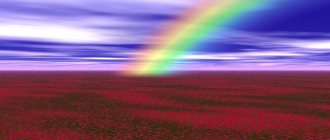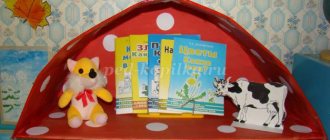Greetings, my reader, the long-awaited warmth of spring has come to our south, so in the very first days of its arrival, I want to tell you today what natural phenomena in spring can be observed in the natural world around us at this wonderful time of year.
Many of the mysterious transformations of nature that I described in this article, of course, a little later than ours, will definitely happen throughout our huge country, and what about the country - all over the world, because natural changes always occur with the change of the next season and not depending on our desire.
Spring transformation in different cultures
Nature in spring is not only about dramatic changes in the surrounding nature, but also a great holiday for the Slavs. March 22 is listed in the folk calendar as Lark Day. It is believed that it is on this date that the first 40 birds arrive every year, bringing spring on their wings. Believers hoped that their hooting on this day would attract warmth and a rich harvest. But March 22 is only the second or subsequent date for attracting spring; they often started hooting when spring itself spoke about it, the drops began, and the snow melted profusely.
For the Japanese, the blossoming nature in spring is its awakening, as for all peoples of the world. Setsubun-sai is a Shinto holiday that marks the end of the long winter season and the beginning of the long-awaited spring.
In medieval Britain, spring was celebrated on the first Monday in May. On the day of the celebration, the girls washed themselves with dew, and the boys competed in archery. But not all Englishmen celebrate it, because it was on the day of the spring celebration that Robin Hood was arrested.
In any case, spring is a time of change, when the soul awakens, new sensations appear, and there is nothing more magnificent than the riot of colors of nature.
Gray whales set off on a long voyage
In the spring, the world's two pods of gray whales begin their migration to the northern seas.
The first herd, the Chukchi-Californian one, leaves the Gulf of California, where the whales winter, and heads to the northern seas of Russia - the Chukchi, Bering and Botfort Seas. In the warm waters of the Gulf of California, gray whales give birth to calves, which also begin a journey of 16 thousand kilometers. “When whales leave our waters, I know it's spring,” says Ken Peterson, an associate at the Monterey Bay Aquarium in California. The second pod of gray whales winters near Korea, and in the summer returns to the Sea of Okhotsk, on the shelf of northeastern Sakhalin.
What is spring?
When the frosty and snowy winter ceases to envelop the chilled earth in a fluffy blanket, and the first thawed patches appear on the winding forest paths, the beautiful spring gradually begins to come into its own. Nature greets the beginning of her reign with admiration and joyfully greets her with the ringing chime of drops and the vibrant chirping of birds. Soon the world around will come to life, free from the ice that binds it and sparkle with bright colors. Now the first snowdrops are confidently making their way through the frozen ground and eagerly raising their gently blue heads to the warm sun, the awakened buds swell as if with joy and are preparing to become emerald leaves, and the animals change their fur to less warm ones. The three most exciting months await nature ahead: March, April, May.
The smell of streptomycetes is in the air - the smell of spring
Even before the first flowers bloom, we feel how the air changes in spring. The very first smell of spring is the smell of streptomycetes bacteria, which begin to actively reproduce with the onset of warm weather. “Streptomycetes live in the top layer of soil, and the smell of one of the volatile compounds they produce, geosmin, is that familiar earthy spring soil smell,” said Susan Perkins, a microbiologist at the American Museum of Natural History. For streptomycetes, geosmin is a weapon to repel other bacteria, but for us this substance determines the smell of wet earth. “Open the lid of a petri dish with a colony of streptomycetes and the smell will be as if you held a flower pot to your nose,” Perkis added.
Interesting Facts
Nature in spring is surrounded by numerous myths and interesting facts.
If we talk about people living near the North Pole, then in the spring they will definitely notice the sun sliding across the horizon in the sky. This is confirmation that the six months of the polar day are coming. And at the South Pole, this phenomenon indicates that 6 months of polar night are approaching. It is at the South Pole that spring occurs from September to November.
The spring equinox, observed in our country on March 20-21, means the period when the day begins to become longer than the night.
The Egyptian Sphinx was positioned by the ancient Egyptians in such a way that it clearly indicates the sunrise on the day of the vernal equinox. And the ancient Greeks believed that the first day of spring is the day when the goddess of fertility Persephone returns after a long stay in the underworld.
In America, Groundhog Day is still celebrated to this day. Every year on February 2 in the city of Punxsutawney, a groundhog is pulled out of its hole, which by default has the name “Phil.” If he suddenly sees his shadow, it means that winter still has 6 weeks to “rule”. If the groundhog doesn’t see her, doesn’t get scared and doesn’t hide in a hole, then spring has already come.
Natural phenomena in spring
Spring is a very bright event in the life of the surrounding world, so it occurs with many interesting and fascinating natural phenomena. These include:
• High water • Snowmelt • Ice drift • Thunderstorm • Hail • Bloom
In spring, the active melting of snow begins, and the cheerful murmur of streams is heard in the air. They fill rivers and lakes, causing them to overflow. The water overflows its banks and fills the banks, as well as forests and fields located nearby. This spring phenomenon is called "flood".
One of the earliest and most noticeable manifestations of spring is snowmelt. The sun, which is already high enough above the horizon and warms the earth well, melts the snow and turns it into winding streams.
When the ice on rivers and lakes begins to melt, it breaks into small pieces and is carried downstream. This phenomenon is called "ice drift". This kind of ice is very fragile, so it is very dangerous to walk on it in the spring.
The first thunderstorms appear in May. They have not yet gained their strength, but it is only a matter of time. Also in spring you can observe such an interesting natural phenomenon as hail. It represents balls of ice falling from the clouds. Hail varies in size. It can be the size of a bead or reach the size of a chicken egg.
One of the most striking phenomena of spring is, of course, flowering. Already at the end of April, the swollen buds begin to gradually open and reveal their emerald leaves to the world, and the green, slender blades of grass, like soldiers, reach out to the warm rays of the sun. Soon the first flowers appear, hospitably opening their petals to greet the awakening insects.
Signs of spring in nature
Liliya Gerasimova
Signs of spring in nature
The most important sign of the approaching spring is an increase in daylight hours.
Even if there are snowdrifts on the street, people wear warm winter clothes, and the sun only shines but does not warm, the still timid breath of spring begins to be felt nature The nights are getting shorter and the days are getting longer. This happens because the planet has turned to the sun at a different angle, and now its rays can fully heat the earth and air.
The sky stops frowning, it changes its color, becomes deep blue, bottomless. However, winter does not give up its positions so easily and at the beginning of spring strong cold winds can blow and rain and snow can fall. But this weather won’t last long - spring will still come into its own!
The main signs by which you can understand the arrival of spring include the following:
The sun shines very brightly, warming everything around with its warmth.
The air temperature rises above the zero mark on the thermometer, and the soil gradually warms up.
The icicles on the roofs of houses begin to melt, the snow becomes loose and darkens. In cities, melted snow forms puddles and streams.
Ice drift begins on the rivers - the melting and movement of ice floes under the influence of wind and water flow.
Sometimes there is so much meltwater in the river that it leads to flooding - flooding of coastal areas of land. It’s good if there are no residential buildings or buildings nearby. Otherwise, people's economy may suffer greatly.
Not only people, but also all living beings sincerely rejoice at the arrival of spring
With the advent of the first warm rays, young green grass and the first spring flowers - snowdrops - break through from under the snow.
The buds on the trees begin to swell and eventually turn into sticky young leaves. are especially beautiful in spring - in April-May they put on a white festive outfit and delight with the beauty and wonderful aroma of their flowers.
There are many signs associated with spring .
For example, if it is warm in mid-March, then the summer will be warm, and a rainy April promises a rich harvest of mushrooms. The abundance of birch sap portends a wet and cool summer. Frequent rumbles of thunder in March foreshadow high wheat harvests.
Birds loudly welcome : wagtails, starlings, rooks, swallows, forest songbirds notify the whole world with joyful trills about the imminent approach of warmth.
After the snow melts, the soil warms up so much that insects begin to sleep out after a long winter hibernation. Ants and various bugs crawl to the surface, flies and caterpillars appear, and the first moths begin to flutter in the sky.
Animals exchange their warm fur coats for summer “outfits”
, they begin to create families in order to have time to have offspring by next winter and teach the kids everything that they know and can do.
It's fun time for baby wild animals
When spring comes, fox cubs, as well as the young of other wild animals, come out of their holes and begin to play. Born in late spring, the cubs spend a long time in the burrow, which provides protection from hungry coyotes. “At first the parents bring food into the hole, but the day comes when the cubs are strong enough to leave the hole, and then I know that spring has come,” says Ronald Case, a biologist at the University of North Carolina, USA.
Spring changes in wildlife
With the arrival of heat and as the soil warms up, trees begin to flow sap: their roots actively absorb moisture from the soil. The liquid, entering the trunk and branches of the tree, dissolves the nutrients accumulated over the winter period and carries them to all parts of the plant.
Some time after the start of sap flow, the buds of trees and shrubs swell. Young shoots, which are in their infancy in the buds, are protected from cold and wind by dense scales. Gradually, the scales open, releasing young leaves. In many plants, they are covered with an adhesive substance or a delicate fluff - this helps protect the tender shoots from adverse weather conditions. Some plants bloom before they leaf out. As a rule, they are pollinated by the wind: alder, hazel.
The lives of animals are also changing. Migratory birds are returning to the middle zone. Naturalists associate the beginning of spring with the arrival of rooks. They are followed by finches, larks and starlings. After water bodies are freed from ice, waterfowl also return. The arrival of nightingales, swallows and cuckoos coincides with the appearance of insects - flies and mosquitoes.
Forest animals that were in hibernation (bears, badgers, hedgehogs, etc.) awaken and leave their shelters. The animals begin molting: thick, warm white-gray winter fur is replaced by lighter “summer” hair. In animals, the mating season begins in the spring, and by the end of spring, offspring appear.









